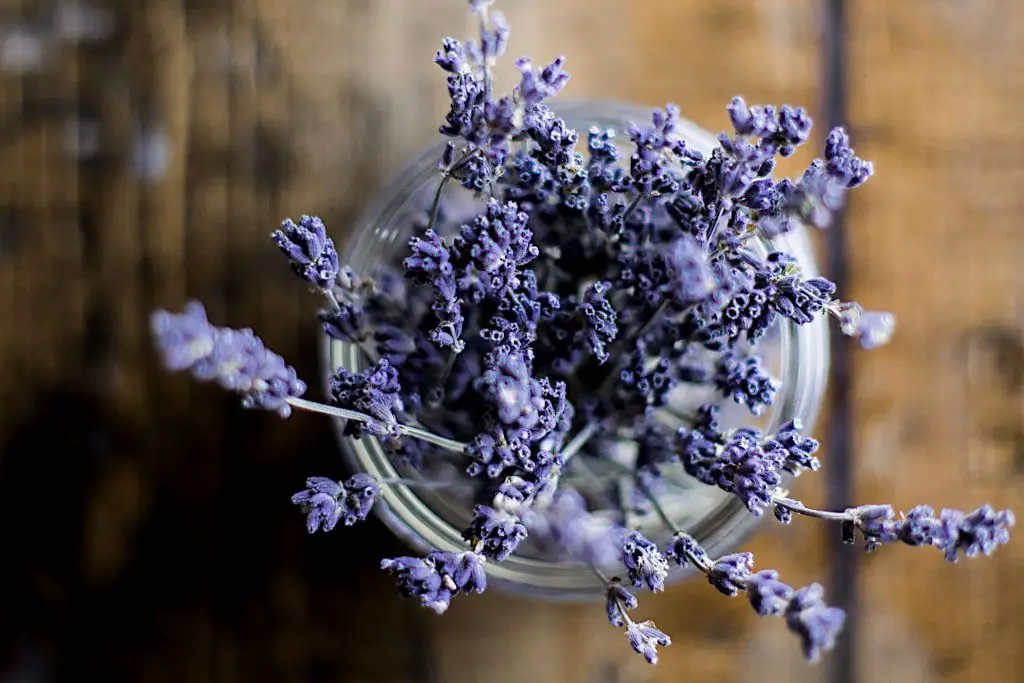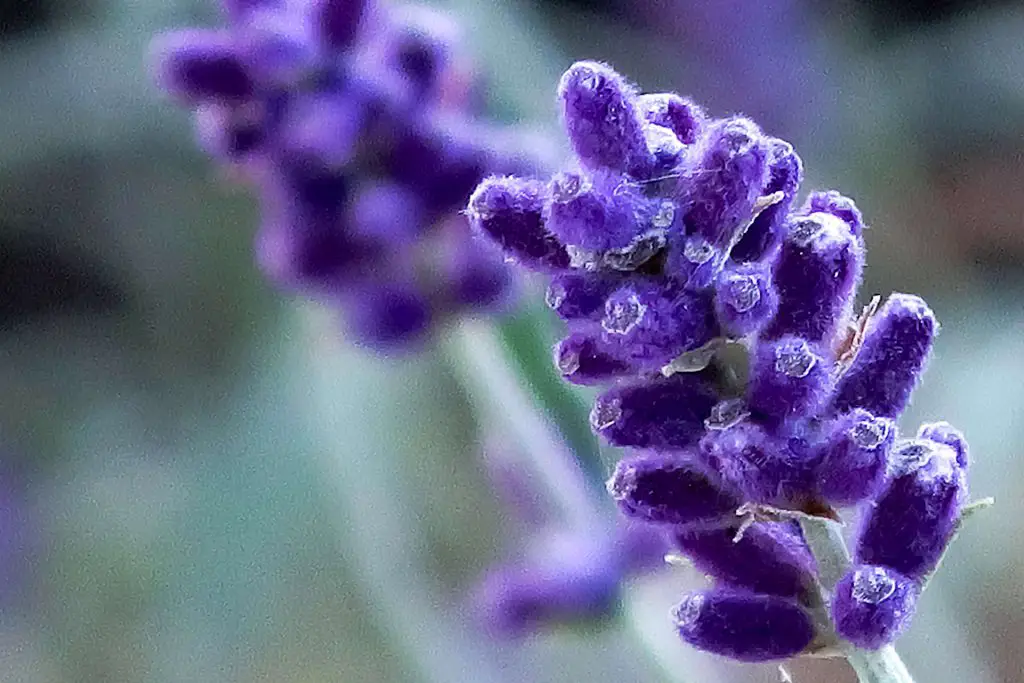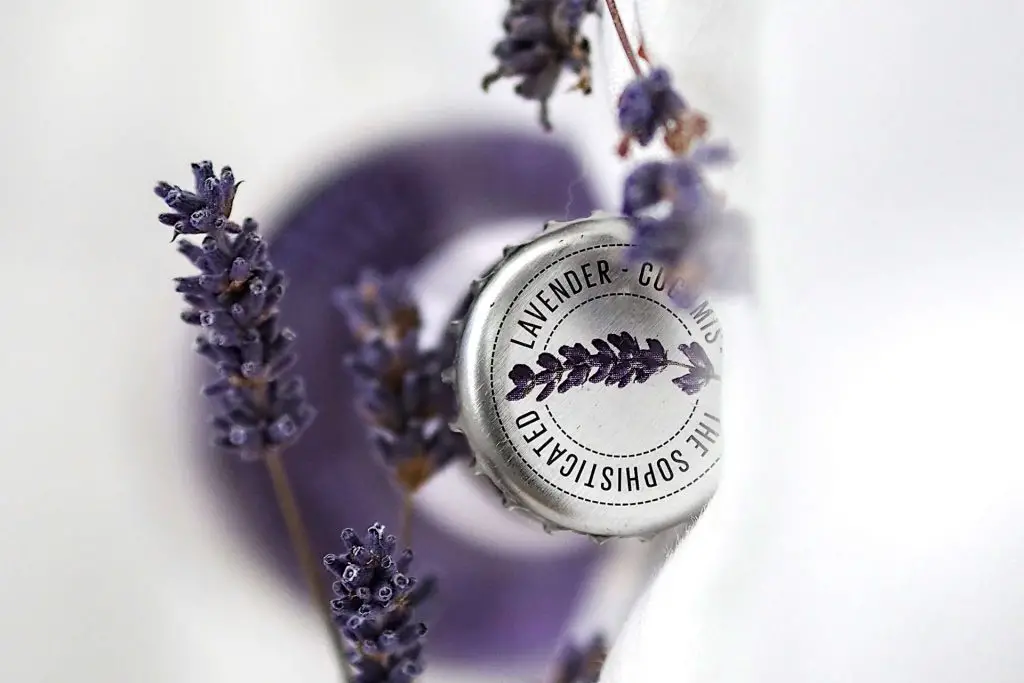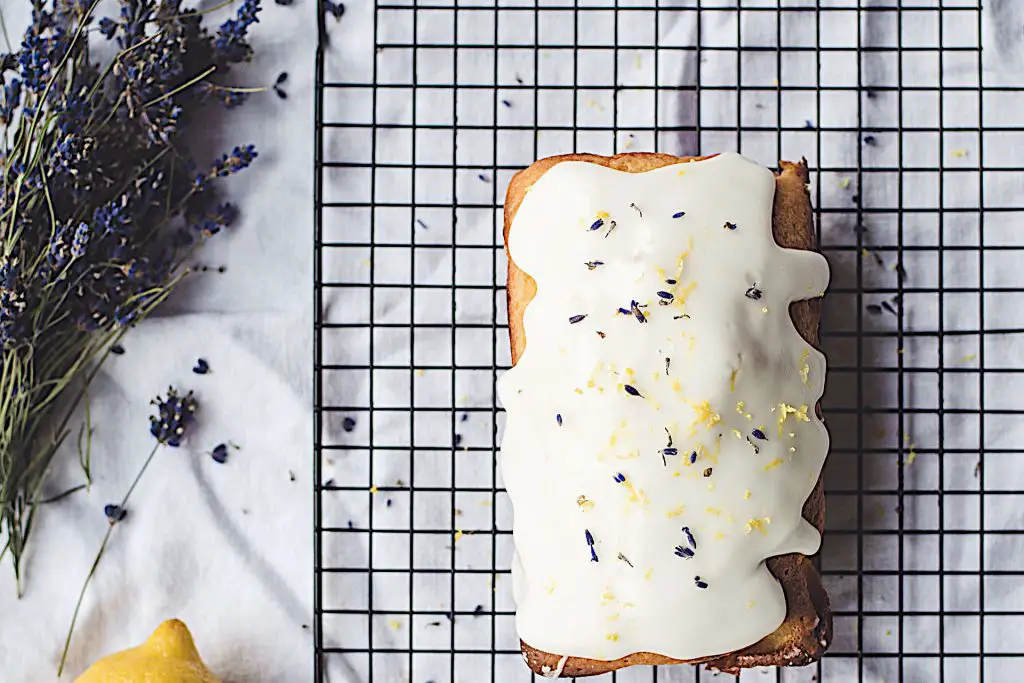Lavender Plants: How They Are Classified, Common Types You Can Grow and Why You Should Grow It
Classifications of plants can be quite confusing, with many sharing similar characteristics yet falling into different categorizations. Lavender is one of those plants that is often miscategorized, with people being misled by its beautiful, sweet-smelling flower. You therefore probably wouldn’t think of lavender as a herb, but it actually is.
Much of this can be put down to a misunderstanding of the difference between a plant and what is merely part of the plant itself. Below, we will look at why lavender is classified in the way it is and why it is often mistakenly classified. We will then consider the main types of lavender grown before looking at the many reason as to why it is one of the best plants to cultivate in your garden.
Lavender is a herbaceous plant that flowers. It is classified as a member of the Lamiaceae family of plants, which also includes mint and sage. Because lavender shares many of the characteristics of a flowering shrub, and is often misclassified as one, however, its botanical genus is that of a herb.[1][2][3]
Why is Lavender a herb – Classifying Plants


Understanding the way in which plants are classified can initially confound you until you get your head around the basic principles.
The main reason that plants are classified according to the commonalities they share is to help organize the millions of varieties that exist into an order. This enables botanists, farmers, and gardeners to make the correct and relevant decisions for growing, controlling, and managing the topography of the land.
Lavenders are classified as a herb. They are part of the Lamiaceae family of plants that include other herbs such as mint, basil, rosemary, and sage to name but a few. There are around 47 species of Lavender with nearly 500 varieties, many of which have not been classified as yet.
Why Is Lavender a Herb?
The definition of a herb is fairly broad but in essence, is a plant that bears seeds but does not have a wood-like stem, and all of the growth above the soil dies off at the conclusion of each growth cycle. In addition, herbs can usually be consumed by people or animals, either as food or used for their medical properties.
Lavender fits this classification. It is a perennial plant that grows every year before dying back at the end of the growth cycle, then returning in the spring and growing back from its rootstock. It is a member of the mint family, although it does have a wood-like stem, but tender branches. Lavender flowers and these blooms bear their seeds.
In addition to its physical characteristics, lavender is used in food and medicine, traits commonly associated with herbs. The essential oil that can be produced from lavender can be used to help with relaxation and sleep. Lavender can also be used as a food additive or flavoring agent in both sweet and savory dishes.
The Physical Appearance of Lavender.
Lavender has a busy structure. It is bushy in nature and typically grows to heights of 1-2 feet tall and can be grown in the ground or grown in pots. The plants produce whorl ring flowers, and their tooth-like foliage is covered in fine hairs. Lavender produces a strong, balsam-scented aroma. The strength of the aroma attracts bees and other insects that will pollinate the flowers.
Can Lavender Be Considered a Flower?
In the general sense that lavender flowers it would be difficult to argue that Lavender should not also be considered a flower. However, there is no botanical classification of a flower. In botanical terms, a plant is either flowering or non-flowering. The flower is a mere stage in a plant’s growth cycle. The flower exists as a way to propagate further plants.
It is the reproductive mechanism for the plant and is dependent on pollinators, such as bees, butterflies, and other insects, which have resulted in those flowers’ petals being more vividly colored and their smells becoming more alluring. This is done in the hope of attracting the attention of the pollinators.


Therefore, as Lavender is a flowering plant and all flowers on plants serve the same function, we can call it a flower, in the same way, that roses, lilies, bluebells, etc. are. Further, Lavender is considered a complete flower because all four elements of the flower the petals, stamens, sepals, and pistil are all present in a Lavender bloom.
Can Lavender Also Be Categorised as A Shrub?
Lavender is often miscategorized as a shrub. This is largely because of its appearance. It is bushy with branch stems shooting off the main stem, which is considered woody, and the plant is very difficult to divide. All these are features of a shrub.
However, this does not make lavender a shrub. Although the main stem is stiff and woody it is not as firm as that of a rose and the branch stems are even more flexible and can still be categorized, like many other herbs. Although difficult, lavender can actually be divided at the root where there is more than one main stem.
It is true to say that it appears that lavender has several shrub-like characteristics and thus why it is often thought of as a shrub. Indeed, it is often referred to as a sub-shrub or semi-shrub. However, in botanical terms, it is a herb and not a shrub.
What Are the Most Common Types of Lavender?


Lavender isn’t just one plant; it’s a whole family of fragrant, beautiful varieties. Each type of lavender offers something unique, from distinct scents to vibrant colors, making it easy to find the perfect fit for your garden.
English Lavender (Lavandula angustifolia)
Description: English Lavender is known for its compact size, typically growing up to 2-3 feet tall. It features slender, green leaves and blooms with deep purple flowers. Growing Conditions: This type thrives in well-drained soil and full sun, preferring temperate climates. It’s quite hardy and can tolerate cold winters. Popular Varieties: Favorites include ‘Munstead,’ known for its early blooms, and ‘Hidcote,’ prized for its intense color. Uses: English Lavender is versatile, used in cooking, essential oils, and as a garden ornamental.
French Lavender (Lavandula dentata)
Description: French Lavender stands out with its toothed leaves and frilled petals. It grows up to 3 feet tall and has a bushy appearance. Growing Conditions: It prefers warm, dry climates and well-drained soil. Regular watering helps it thrive, but it doesn’t like overly wet conditions. Popular Varieties: ‘Goodwin Creek Grey’ and ‘Fernleaf’ are popular choices, valued for their robust growth and striking appearance. Uses: Often used ornamentally, French Lavender adds a touch of elegance to gardens and bouquets with its aromatic leaves and flowers.
Spanish Lavender (Lavandula stoechas)
Description: Spanish Lavender is easily identified by its distinctive, rabbit-ear-like petals on top of the flower heads. It typically grows about 2-3 feet tall. Growing Conditions: It thrives in hot, dry climates with well-drained soil. It’s a sun-lover and needs minimal water once established. Popular Varieties: ‘Ballerina’ and ‘Kew Red’ are well-loved for their unique and vibrant blooms. Uses: Spanish Lavender is often used in landscaping for its decorative appeal and strong fragrance.
Lavandin (Lavandula x intermedia)
Description: Lavandin is a hybrid of English and Portuguese Lavender, known for its vigorous growth and tall, sturdy stems. It can reach heights of up to 3 feet. Growing Conditions: Adaptable to various climates, Lavandin prefers well-drained soil and full sun. It’s drought-tolerant once established. Popular Varieties: ‘Grosso’ and ‘Provence’ are popular for their abundant flowers and high essential oil content. Uses: Lavandin is frequently used in perfumery and for making sachets due to its strong fragrance and high oil yield.
With so many types of lavender to choose from, there’s a perfect plant for every garden. Whether you’re looking for something fragrant, visually striking, or easy to care for, lavender offers a wonderful addition to any outdoor space. Explore these varieties to find the one that best suits your needs and enjoy the beauty and aroma of this versatile plant.
Why You Should Consider Growing Lavender
Lavender is more than just a beautiful plant; it’s a versatile addition to any garden. From its calming scent to its low-maintenance nature, there are many reasons to grow this lovely herb.
Aromatherapy and Relaxation
Natural Stress Reliever: Lavender is well-known for its soothing properties. The scent can help reduce anxiety and promote relaxation, making it perfect for creating a calm atmosphere at home. Home Use: Add a few drops of lavender essential oil to your diffuser or place sachets in your bedroom to enjoy its calming effects.
Medical Properties of Lavender


Herbs have been used in medicine for thousands of years. Lavender, in particular, has long been valued for its medicinal properties, and it was thought to have been widely used by ancient Egyptians. Papyri dating back 4,500 years and including lists of treatments based on “plants of life” were uncovered during archaeological excavations in the nineteenth century.
Both the greeks and the Romans also used Lavender for its medicinal properties, with references to Galen 129-216 CE, citing it as an antidote for bites, stings, and poisons. By the end of the first century CE Pliny the Elder has begun to differentiate between different lavender varieties for different uses from perfume to medicine.[4]
In the modern world, Lavender, in its natural form, is often used in herbal medicine to treat insomnia, and digestive problems as well as having anti-inflammatory qualities, and is a natural insect repellent. Lavender is thought to bring a sense of calm to the body and mind. It can also aid in meditation, among other things.[5]
Using Lavender in Cooking – Culinary Properties of Lavender


Another property widely associated with herbs is their use in food. Lavender is no exception and can be used in a variety of different ways. This is because, in contrast to some other herbs, lavender can be utilized in its entirety, from the flower buds through the stems and leaves of the plant. With its sweet and floral taste, it is a favorite herb for cooking.
It can be used fresh or dried and added to food in small amounts; too much lavender will give a bitter taste. Lavender is a versatile herb that can be used in many different dishes, from savory to sweet. It pairs well with other herbs such as thyme, rosemary, and oregano, and it can also be used in desserts such as cakes and cookies.
Flavor Enhancer: Lavender can add a unique twist to your cooking. Its slightly sweet and floral flavor pairs well with both sweet and savory dishes. Recipes: Try adding lavender to cookies, cakes, or even roast lamb for an unexpected and delightful flavor boost.
Gardening Benefits
Over and above its medical and cooking qualities, there are an enormous number of gardening benefits to cultivating lavender in your garden.
Pollinator-Friendly
Lavender is a magnet for pollinators like bees and butterflies. These beneficial insects are crucial for pollinating many of the plants in your garden, leading to better fruit and vegetable yields. Planting lavender can help support local bee populations, which are essential for the environment and agriculture.
Low Maintenance
One of the standout features of lavender is its hardiness and low maintenance needs. Once established, lavender plants are highly drought-tolerant, making them an excellent choice for gardeners in dry climates or those looking to conserve water. They require minimal watering and are generally resistant to pests and diseases, reducing the need for chemical treatments.
Soil Improvement
Lavender thrives in poor, well-drained soils, which means it can be a great addition to parts of your garden where other plants struggle. Its roots help improve soil structure over time, making the soil more friable and better draining. This can benefit surrounding plants and overall garden health.
Erosion Control
With its extensive root system, lavender can help prevent soil erosion on slopes and embankments. Planting lavender in these areas can stabilize the soil, reducing runoff and retaining moisture where it’s needed.
Companion Planting
Lavender makes an excellent companion plant. It can help deter pests that bother neighboring plants, such as whiteflies, which can be a nuisance in vegetable gardens. Planting lavender near your vegetable or herb garden can create a more balanced and healthy ecosystem.
Seasonal Interest
Lavender provides year-round interest in the garden. Its silvery-green foliage looks attractive even when the plant is not in bloom. In the summer, its purple flowers add a splash of color and a delightful fragrance. As an evergreen shrub, it maintains its presence and structure in the garden throughout the year.
Versatile Design Options
Whether used as a border plant, in a rock garden, or as a fragrant hedge, lavender’s versatility in garden design is unmatched. It can be pruned into various shapes, used as an accent plant, or combined with other perennials and shrubs for a layered look. Its consistent structure and color make it a reliable choice for any garden style.
Whether it is from supporting pollinators to improving soil and providing low-maintenance greenery, lavender is a versatile and valuable addition to any garden. By incorporating lavender into your garden, you not only enhance its visual appeal but also contribute to a healthier, more sustainable environment.
Decorative Appeal
Visual Beauty: Lavender’s vibrant purple blooms and silvery-green foliage make it a striking addition to any garden. It can be used in borders, as ground cover, or even in containers. Indoor and Outdoor Uses: Lavender can be used fresh or dried for various decorative purposes. Use dried lavender in wreaths, potpourri, or as a fragrant addition to your home décor.
Growing lavender offers a host of benefits, from its calming fragrance to its decorative appeal. It’s a plant that can enhance your garden and your home in many ways. Whether you’re a seasoned gardener or just starting out, consider adding lavender to your garden for its beauty, ease of care, and multitude of uses.
Final Thoughts:
Lavender, through its properties and physical appearance, would seem to have a case to be considered a herb, a flower, and a shrub. However, while you can call it both a herb and a flower, in botanical classification terms it is not a shrub.
In strict botanical classification, it is a herb and has all the properties of a herb both in terms of plant and use. It is an incredibly adaptable plant that has uses in, the cooking and medical fields, as well as being used for aromatherapy and other aromatic uses.
Notes
- University of Illinois: Herbs Add Flavor to Life
- University of Illinois: Lavender
- Clemson University: Factsheet Herbs
- John Bostock, M.D., F.R.S., H.T. Riley, Esq., B.A., Ed: Pliny the Elder, The Natural History: Book XXI. an Account of Flowers. and Those Used for Chaplets More Particularly.
- National Library of Medicine, Hazem S. Elshafie and Ippolito Camele: An Overview of the Biological Effects of Some Mediterranean Essential Oils on Human Health

